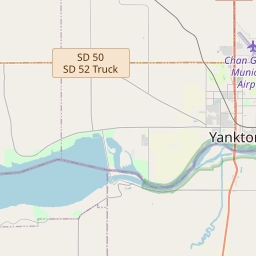The Lewis & Clark Expedition
Historical marker location:
Yankton, South Dakota
( Marker can be reached from Park Drive near Levee Street.)







© OpenStreetMap contributors
A brief timeline of the Lewis and Clark Expedition
- 1803: President Thomas Jefferson commissions Meriwether Lewis, his personal secretary, to lead an expedition to explore the western territories of the United States and find a practical route to the Pacific Ocean.
- 1804: Lewis meets up with William Clark, a former army officer and experienced explorer, in Kentucky. They assemble a team of over 30 men and set out on the journey up the Missouri River.
- 1805: The expedition reaches the Rocky Mountains and crosses the Continental Divide. They build Fort Clatsop on the Pacific coast and spend the winter there, before returning east in the spring of 1806.
- 1806: Lewis and Clark split up to explore different routes on their way back to St. Louis. They reunite in September and return to civilization, where they are celebrated as national heroes.
- 1807: The Lewis and Clark Expedition publishes an official account of their journey, called the "History of the Expedition Under the Command of Captains Lewis and Clark," which becomes a bestseller and helps to promote westward expansion.
Loading...
Searching for other points of interest within 3 miles of this location.The Homestake Mine, located in the Black Hills of South Dakota, was the largest and deepest gold mine in North America, producing over 40 million ounces of gold during its operation.
About Yankton County
Yankton County Timeline
Yankton County, located in the southeastern part of South Dakota, has a rich and diverse history that dates back thousands of years. The area was first inhabited by Indigenous cultures, such as the Yankton Sioux tribe, who hunted and fished along the Missouri River. European exploration of the area began in the late 17th century, with French traders and fur trappers establishing contact with Native American tribes.
In 1803, the Louisiana Purchase brought the region under the control of the United States, and the Lewis and Clark expedition passed through what is now Yankton County in 1804. This led to increased American presence in the area, and in 1859, Yankton was officially designated as the capital of the Dakota Territory. The County was established in 1862, during the early stages of the American Civil War.
Yankton County played a significant role in the development of the Dakotas. It served as the territorial capital until 1889 when South Dakota became a state. The county saw rapid growth during this time, with the construction of railroads and the establishment of businesses. Agriculture, including farming and livestock, formed the backbone of the local economy, and Yankton became a major center for trade and commerce.
Over the years, Yankton County has faced various challenges and changes. The decline of the agricultural sector in the early 20th century led to a shift towards other industries like manufacturing and healthcare. Today, the county continues to thrive as a vibrant community, with a strong emphasis on education, tourism, and outdoor recreational activities. Overall, the history of Yankton County reflects the dynamic nature of American expansion and the resilience of its inhabitants.
In 1803, the Louisiana Purchase brought the region under the control of the United States, and the Lewis and Clark expedition passed through what is now Yankton County in 1804. This led to increased American presence in the area, and in 1859, Yankton was officially designated as the capital of the Dakota Territory. The County was established in 1862, during the early stages of the American Civil War.
Yankton County played a significant role in the development of the Dakotas. It served as the territorial capital until 1889 when South Dakota became a state. The county saw rapid growth during this time, with the construction of railroads and the establishment of businesses. Agriculture, including farming and livestock, formed the backbone of the local economy, and Yankton became a major center for trade and commerce.
Over the years, Yankton County has faced various challenges and changes. The decline of the agricultural sector in the early 20th century led to a shift towards other industries like manufacturing and healthcare. Today, the county continues to thrive as a vibrant community, with a strong emphasis on education, tourism, and outdoor recreational activities. Overall, the history of Yankton County reflects the dynamic nature of American expansion and the resilience of its inhabitants.
Yankton County Timeline
This timeline provides a condensed summary of the historical journey of Yankton County, South Dakota.
- 1800 - The Yankton Sioux Tribe is the initial inhabitant of the area now known as Yankton County.
- 1804 - The Lewis and Clark expedition visit the area and establish diplomatic relations with the Yankton Sioux Tribe.
- 1859 - The first temporary white settlement is established in what is now Yankton County.
- 1861 - Yankton County is officially organized and named after the Yankton Sioux Tribe.
- 1868 - The signing of the Treaty of Fort Laramie guarantees the reservation lands of the Yankton Sioux Tribe.
- 1870 - Yankton becomes the capital of Dakota Territory.
- 1882 - The construction of the first railroad line into Yankton County.
- 1889 - South Dakota becomes a state, with Yankton County as one of its original counties.
- 1920 - Yankton College is founded, becoming an important educational institution in the county.
- 1954 - The construction of the Gavins Point Dam and Lewis and Clark Lake begins, providing recreational and economic benefits to Yankton County.
- 1974 - The creation of the Yankton Sioux Reservation through land consolidation efforts.